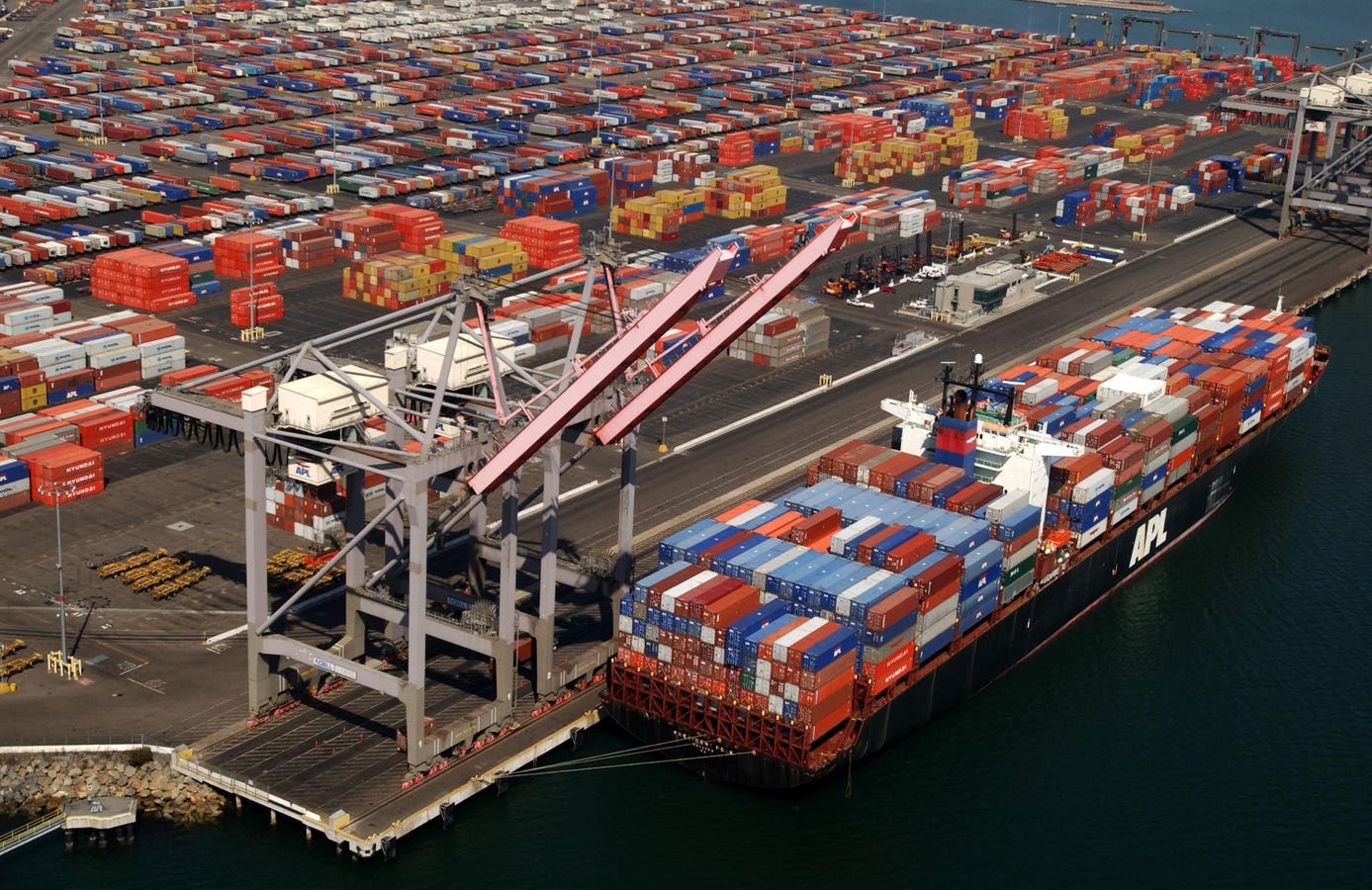Money
Tariffs Are Sword And Shield Of U.S. Economic Security

Navigating the New Era of U.S. Trade Policy and Economic Security
Introduction: The Shift in U.S. Geopolitical Strategy
The global geopolitical landscape has undergone a significant transformation in recent years, with the United States adopting a more assertive approach to trade and tariff policies. This shift is part of a broader strategy to enhance U.S. national and economic security in what is increasingly referred to as "Cold War Two." The term captures the escalating tensions between the U.S. and its adversaries, particularly China, Russia, Iran, and North Korea, which are forming strategic alliances to challenge American dominance. The U.S. has responded by leveraging tariffs and trade policies as tools of economic statecraft, aiming to deter kinetic conflicts and ensure economic self-sufficiency. This approach, rooted in a Realpolitik mindset, reflects the interconnected nature of economic and national security in the modern era.
U.S. Tariff Realpolitik: Supporting Economic and National Security
At the heart of U.S. trade policy is the recognition that economic security is as critical as national security. Economic security encompasses a nation’s ability to project soft power, secure critical supply chains, and maintain self-sufficiency in the face of geopolitical threats. The U.S. has historically relied on its military strength to protect national security, but the changing landscape of global competition has underscored the need for economic resilience. Tariffs have emerged as a key tool in this strategy, designed to strengthen U.S. industries, reduce dependency on adversarial nations, and safeguard access to critical resources.
The Trump administration’s aggressive use of tariffs was a defining feature of this approach, with measures targeting imports from China, steel, aluminum, and other strategic goods. These policies have been continued and expanded by the Biden administration, signaling a rare bipartisan consensus on the importance of economic security. The tariffs are not merely punitive measures but are intended to level the playing field, counter unfair trade practices, and ensure that the U.S. can maintain its economic and military dominance in the face of rising competition.
The Pillars of Economic Security: Economic Power and Self-Sufficiency
Economic security rests on two pillars: economic power and self-sufficiency. Economic power is measured by a nation’s ability to generate wealth, sustain growth, and project influence through its economy. The U.S. enjoys a significant advantage in this regard, with the largest GDP globally, a robust labor market, and unparalleled access to capital markets. These factors have historically enabled the U.S. to outspend its adversaries, as demonstrated during the Cold War when the U.S. was able to outpace the Soviet Union.
Self-sufficiency, on the other hand, refers to a nation’s ability to meet its own needs without relying on external sources. This is particularly critical in the context of supply chains for critical goods, such as semiconductors, rare earth metals, and defense materials. The COVID-19 pandemic exposed vulnerabilities in global supply chains, highlighting the risks of over-reliance on foreign production. In response, the U.S. has sought to reduce its dependence on adversarial nations, particularly China, through measures such as the Section 232 tariffs on steel and aluminum and the Section 301 tariffs targeting Chinese technology.
Materiel Production, Metals Tonnage, and the Role of Tariffs
A key aspect of economic self-sufficiency is the ability to produce the materials necessary for national defense. The U.S. has faced challenges in this area, particularly in the production of metals such as steel and aluminum. Decades of globalization have eroded domestic production capacity, leaving the U.S. vulnerable to disruptions in global supply chains. China’s dominance in metal production has further compounded these risks, as it has used its position to undercut global prices and weaken competitors.
In response, the U.S. has implemented tariffs to protect domestic industries and encourage investment in critical sectors. The Section 232 tariffs on steel and aluminum, introduced in 2018, were specifically designed to address these vulnerabilities. By maintaining domestic production capacity, the U.S. can ensure that it has the resources needed to support its military and economic ambitions, even in the face of external threats. These measures are not without controversy, however, as they have led to increased costs for U.S. businesses and tensions with trade partners.
Dual-Use Technology, Trade, and the Future of U.S. Strategy
The rise of dual-use technologies—those with both civilian and military applications—has added a new layer of complexity to the U.S. trade strategy. Countries like China have leveraged their position in global supply chains to gain access to advanced technologies, raising concerns about the potential for misuse. In response, the U.S. has imposed restrictions on technology transfers and investments, particularly in sectors critical to national security, such as semiconductors and telecommunications.
Taiwan has emerged as a critical player in this context, as it is home to the world’s leading semiconductor manufacturers. China’s ambitions in the region have heightened the stakes, leading the U.S. to adopt a more assertive approach to protecting its interests. The "Delete China" initiative, modeled after China’s "Delete America" directive, aims to reduce U.S. reliance on Chinese technology and ensure that critical supply chains are secure. This strategy is likely to expand in the coming years, with further restrictions on Chinese goods and technologies.
The Future of U.S. Tariff Policy and Geopolitical Implications
Looking ahead, the U.S. is expected to continue its aggressive use of tariffs as a tool of economic statecraft. The Trump administration has pledged to introduce across-the-board tariffs on U.S. trading partners, with a particular focus on countering China’s economic influence. These measures are designed to encourage geopolitical cooperation and clamp down on practices such as goods dumping and tariff evasion. While the immediate impact of these policies is uncertain, they are likely to have far-reaching implications for global trade and economic security.
The success of this strategy will depend on how it is implemented and whether the U.S. can achieve its objectives without triggering a broader trade war. The Biden administration has shown a willingness to build on the foundation laid by its predecessor, signaling that tariffs are likely to remain a key part of U.S. trade policy for the foreseeable future. As the U.S. navigates the challenges of Cold War Two, its ability to balance economic and national security interests will be critical to its success on the global stage.
Conclusion: The Intersection of Economics and National Security
The application of U.S. trade policies and tariff threats reflects the interconnected nature of economics and national security in the modern era. By leveraging its economic power and promoting self-sufficiency, the U.S. seeks to counter the growing influence of adversarial nations and ensure its continued dominance on the global stage. While the use of tariffs has been controversial, it underscores the recognition that economic security is as critical as military strength in the face of rising geopolitical tensions.
As the U.S. moves forward in this new era of competition, the effectiveness of its trade policies will depend on its ability to balance short-term economic interests with long-term strategic goals. The outcome will have profound implications not only for the U.S. but for the global economy as a whole.
-

 Money3 days ago
Money3 days agoConsumer Financial Protection Bureau Adds Error Message To Home Page
-

 Money2 days ago
Money2 days agoWinning Content Strategies For Wealth Managers
-

 Australia1 day ago
Australia1 day agoTropical Cyclone Zelia intensifies to category 2 storm
-

 Asia1 day ago
Asia1 day agoWhat you need to know about 2024 YR4, the asteroid that could hit Earth in about eight years’ time
-

 Entertainment22 hours ago
Entertainment22 hours agoPrince Harry and Meghan Markle’s Best Moments and Photos From the 2025 Invictus Games
-

 Australia16 hours ago
Australia16 hours agoTropical Cyclone Zelia intensifies to category five system off Pilbara coast
-

 Politics1 day ago
Politics1 day agoDozens of religious groups sue to stop Trump admin from arresting migrants in places of worship
-

 Entertainment3 days ago
Entertainment3 days agoEvery Celebrity Who Attended the 2025 Super Bowl: A Guide to the A-Listers at the Big Game


















